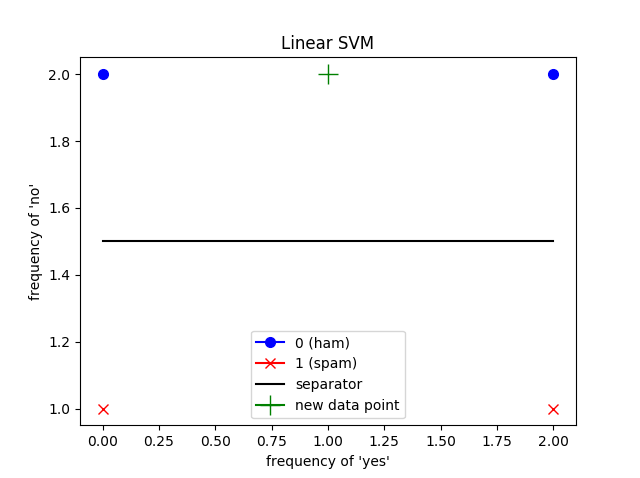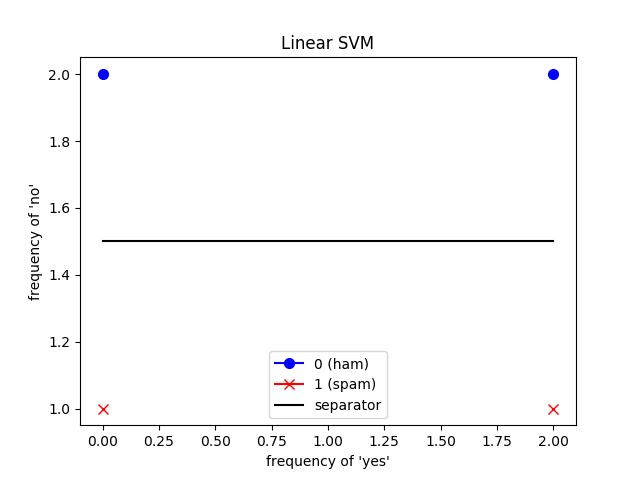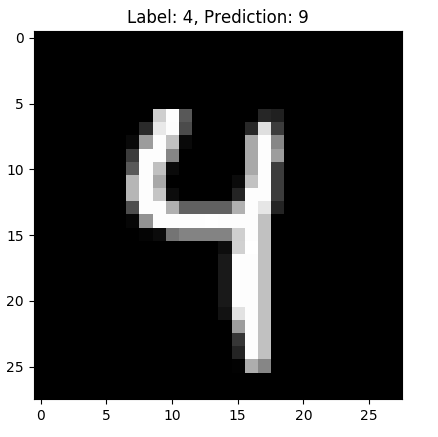A simple introduction to text classification with machine learning. The course will cover some elementary linguistic morphology techniques for extracting features, and an introduction to some classifiers.
The tasks in this course will be solved in Python 3 with the scikit-learn tool.
Tasks:
- Creating a spam-filter
- Sentiment analysis of movie reviews
Prerequisites: Some Python
The process is to assign a document to one or more classes or categories. The documents may be texts, images, music, etc. One of the most common types of document classification is text classification.
- Content-based classification is classification in which the weight given to particular subjects in a document determines the class to which the document is assigned. It could be the number of times given words appears in a document.
- Request-oriented classification (or indexing) is classification in which the anticipated request from users is influencing how documents are being classified.
Before we can use the data set, we have to extract the features we want to use. There are several ways to extract these features. Some normal techniques are:
- Tokenization is the process of delimiting a string of input characters.
The resulting tokens are then passed on to some other form of processing.
E.g.
The quick brown fox jumps over the lazy dog => [the, quick, brown, fox, jumps, over, the, lazy, dog] - Stemming is the process of reducing inflected (or sometimes derived) words
to their word stem, base or root form.
E.g.
cats, catlike, catty => cat, or the special form where the stem is not itself a wordargue, argued, argues, arguing => argu - Lemmatization is the process of grouping together the inflected forms of a
word so they can be analysed as a single item, identified by the word's lemma,
or dictionary form.
E.g.
am, are, is => be - Removing stop words is a way to remove irrelevant data. Any group of words
can be chosen as the stop words for a given purpose. This means that stop
words are the words that don't provide any context for the given task at hand.
E.g.
a, and, as, at, in, the - The bag-of-words (BoW) model is used to look at the frequency of each word
in a document. All words in the corpus (text samples) form a dictionary.
E.g.: The vocabulary
["John", "likes", "to", "watch", "movies", "Mary", "too", "also", "football", "games"]applied to the textJohn likes to watch movies. Mary likes movies too.will form the vector[1, 2, 1, 1, 2, 1, 1, 0, 0, 0]. - n-gram is another probabilistic model. Instead of counting the frequency of
words, as in BoW, one counts sequences of n words.
E.g.: If one would like to extract the vocabulary from
Cats dance funny on the Internet., it would result in: 2-gram:['Cats dance', 'dance funny', 'funny on', 'on the', 'the Internet']3-gram:['Cats dance funny', 'dance funny on', ' funny on the', 'on the Internet']
We want to make a model that predicts a class for different text examples. For simplicity we have chosen data sets with binary classification (e.g. spam/ham).
For choosing the right estimator we can use scikit's estimator chooser:

Vocabulary: ['yes', 'no']
Messages: ["yes no yes no", "no yes yes", "no", "no no"]
Labels: [0, 1, 1, 0]
"yes no yes no" → [2, 2]
"no yes yes" → [2, 1]
"no" → [0, 1]
"no no" → [0, 2]
Since we only have two features (frequency of 'yes' and 'no'), the linear SVM only has two dimensions.
We get the sentence "no yes no", and transforms it with Bow. This results in [1, 2].
The prediction will then be as follows:

As we can easily see, this sentence will get classified as 0 (ham).
Please clone (git clone) or download this repo before you do anything else.
If you need a decent IDE for python (no IDE wars please), get the Pycharm Community Edition.
If you already have some of the necessary requirements please make sure they are up to date. This course was designed and tested with python 3.6. 3.5 will not work.
All you need to complete these tasks is included with Anaconda. Some of the code may require the latest version of Anaconda, so please re-install or upgrade if you are on an old version.
If you are using pycharm, it would now be a good idea to set the python interpreter from anaconda as the project interpreter.
Install Python 3.6.
To install the requirements simply install them with pip.
pip3 install -r requirements.txtOr if you want to install them locally in a virtual environment, do the following;
python3 -m venv env
source env/bin/activate
pip install -r requirements.txtNote: you may have to install
venvseparately.
If you are using pycharm, it would now be a good idea to set the project
interpreter to
either the global python install, or if you installed in virtual environment,
set it to env/bin/python.
Execute the main.py script with python main.py.
If you are getting an error here like No module named 'sklearn', make sure you
are running it with the python install/environment we set up earlier. If it
still fails go back to the setup part or get help from an instructor.
file: spam_filter.py
In this task we are going to classify a SMS as either spam or ham. The data set is labeled with 0 (ham) and 1 (spam). To better understand all the steps of creating and validating a classifier we are going to:
- Split the data into testing and training sets.
- Extract features from the test data.
- Train the classifier.
- Verify that the classifier can tell the difference between spam and ham on unseen data.
Data set:
Have a look at the data in the sms csv file., can you identify some words that occur more often in the spam? Do not click any links in the text. They are spam, and may be bad for your health.
| Spam | SMS |
|---|---|
| 0 | Fair enough, ... |
| 1 | Did you hear about ... |
In order to validate that the classifier is unbiased and able to make accurate predictions after the training phase we have to train it on one part of the data, and test it on another.
Generally this is done by first shuffling the data-set, so that we avoid any bias in the ordering of the data followed by slicing on some index determined by how big each set should be.
Your job is to implement the function split_and_shuffle_data_set. It takes the
data as an array of strings and the labels as an array of ints.
You can do this however you would like, but it could be a good idea to use sklearns shuffle function and list slicing.
Next we are going to extract features from the data. Mainly there are two important things to keep in mind here:
- Most ML algorithms require that we describe each data point as a vector of numbers.
- What features we extract will ultimately determine what the algorithm is capable of learning. Here we are going to make a simple count vectorizer with no added magic. This is a word bag model, and the predictor will therefore only be able to infer things from what words are present, not the structure of the sentences themselves.
A boolean vectorizer works by creating a vector for each document describing what words are present. For instance: given the training documents: ['a b c', 'c d'] and the test document ['a d e'] we want to transform them like so:
| Document | Vector [a, b, c, d] | Train? |
|---|---|---|
| 'a b c' | [1, 1, 1, 0] | Yes |
| 'c d' | [0, 0, 1, 1] | Yes |
| 'a d e' | [1, 0, 1, 0] | No |
There is no 'e' in the output vector because the transformer is not shown the test data when it is fitted.
In order to complete this task we are going to implement the missing methods in
the class SMSFeatureExtractor. It follows the sklearn transformer contract
with a fit method and a transform method. Here we want you to make your own
transformer, but later it would be smart to use one already
included with sklearn.
You should start with the fit method, and then tackle the transform.
The goal of the fit method is to prepare the transformer so that it is ready to transform any given document.
Here, it would be useful to store a representation of all the words in the data-set. We recommend trying a simple sorted
list of words. The string.split() method could be useful here.
The transform method should take in the string you created and create a vector like the one you can see in the table above.
A good place to start is to loop over the words in the vocabulary we saved in fit and adding a 1 to a list if it is
present in the string, and a 0 if it is not.
Ok, time to get to the machine-learning part.
We have set up a really stupid classifier for you. It only counts the most commonly occurring label and predicts that for any given input.
You can drop in any classifier you want already shipped with sklearn, such as LinearSVC, or you can try to implement a simple one like k nearest neighbours in place of the one we gave you.
If everything went smoothly you should see a classification report and a confusion matrix in the output. The scores obviously depend on how well your classifier performed.
The confusion matrix is the simplest to interpret. The first index tells us
what label a given example had, and the second what we predicted it to be.
[0][0] is the true negatives (normal messages we allowed to pass), [1][1]
the true positives (spam we found) and so on.
The classification report consists of three measures for each class, and one average:
- Precision: When we say that something is a given class, how often are we right?
- Recall: Out of all the test examples with that given label, how many did we correctly identify?
- f1-score: A combination of those two scores. (2 * precision * recall / (precision + recall))
As soon as these look good, at least above 0.9, you can feel confident that you have made a decent spam filter and move on to the next task.
file: sentiment_analysis.py
The data set includes multiple columns. For a simple binary classifier we could use the positive/negative label, but that is too easy. We are going to predict the exact score of the review. Here we are going to measure how well you are doing with Root Mean Squared Error. RMSE is a measure of how much, on average, your predictor is missing the target score.
As we did in the last task we could use a classifier. However, this would then be a so-called multiclass classification problem. If we instead want make use of the fact that the problem is predicting a score on a linear scale it would be smart to instead think of this as a regression problem. There are examples of regressors in the model selector we looked at earlier.
Instead of providing you with all the glue code you are going to build a pipeline. Think of a pipeline as a chain of transformers that mold the data, followed by an estimator that learns and predicts based on the earlier transformers. Pipeline docs for the curious: docs.
We have given you a simple starting pipeline with a dummy transformer and regressor. Feel free to change those as you see fit, or use the transformers and estimators provided by scikit learn.
Data set:
You can have a look at the data in the review csv file..
| Positive | Rating | Review |
|---|---|---|
| 1 | 10 | A nicely done thriller with plenty of ... |
| 0 | 2 | This film just goes around in circles ... |
As soon as you are happy with the results (this is very individual, but try to at least get below 3) you can move on to the next task :)
Execute the extra.py script with python extra.py.
file: number_classifier.py
In this extra task we want to classify bitmaps to numbers. Each bitmap is represented by a 1d-array. When you are done with all subtasks, you will get printed the wrongly classified numbers.
You can then try to optimize your solution. The steps closely resemble the steps in main task 1.
In this task we want to split the data set into training and test set.
Note: return data in correct order.
If you want to store some relevant information about the data set do
that here, if not; just return self.
Transform the bitmaps to wanted representation, and return a numpy array.
Choose an estimator (or make your own), and train it with the transformed training data.
Awesome! You are through the tasks. If there is still time left in the course raise your hand and ask for some more to do.
If you prefer not talking to us, go back to task 1 and implement the KNN estimator yourself, or keep improving the score in task 2.

